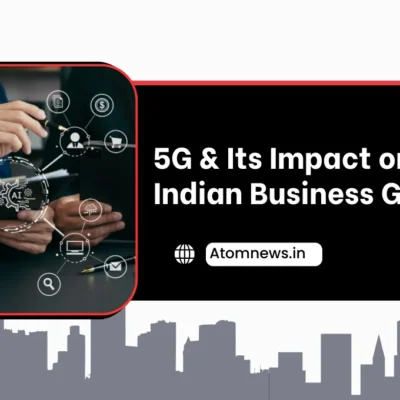The Public Relations industry in India is entering a period of significant transformation. Rising digital adoption, regional-language internet growth, creator-led storytelling, and AI-driven communication tools are reshaping how brands manage reputation and influence public perception. As we approach 2026, PR is evolving into a more integrated, data-led and audience-centric discipline. The industry is moving far beyond traditional media relations, and the next few years will redefine the role of PR professionals across sectors.
A Shifting PR Landscape Driven by Digital Growth
The PR industry in India has expanded rapidly over the past decade, supported by sustained digital penetration and rising demand for strategic communication. With over 806 million internet users and exponential growth in social platforms, the nature of audience engagement has fundamentally changed. Stakeholders now consume information in real time, expect transparency, and evaluate brands across multiple touchpoints. This is pushing PR teams to operate with greater speed, agility and accuracy than ever before.
Digital-first communication has become standard across sectors, from startups and fintech firms to healthcare, FMCG and public sector organisations. PR is no longer about securing visibility alone; it is now an essential component in shaping brand narratives, building trust and managing dynamic audience expectations.
Data, Analytics and Measurement Are Redefining PR Strategy
One of the biggest shifts in the PR ecosystem is the rise of data-driven planning and measurement. PR performance is increasingly assessed through advanced metrics such as sentiment analysis, share of voice, engagement quality, digital footprint growth, and outcome-linked KPIs. Brands expect deeper insights, clearer attribution and stronger alignment with business objectives.
AI-powered dashboards, analytics platforms and listening tools are enabling real-time monitoring of brand conversations. This is transforming how PR teams anticipate crises, shape narratives and respond to emerging trends. Measurement frameworks are becoming more sophisticated, and expectation for performance transparency is growing across the industry.
The Creator Economy Is Reshaping Brand Narratives
Influencers, content creators and digital storytellers have become central to PR campaigns in India. As traditional media fragments and audiences shift to Instagram, YouTube, LinkedIn and regional platforms, creator-led content is emerging as a powerful tool for brand storytelling. India’s creator economy is projected to grow substantially, fuelled by micro and nano creators who bring local relevance and authenticity.
Brands are increasingly integrating creators into long-term strategic communication plans rather than one-off campaigns. Creators provide credibility, cultural context and direct audience access—attributes that are now essential for modern PR. This collaboration is expected to scale further in 2026, especially in regional markets.
Regional and Multilingual PR Will Dominate
India’s linguistic diversity is becoming a decisive factor in shaping PR direction. With a growing share of digital users preferring regional-language content, communication strategies must reflect cultural nuances and local narratives. PR campaigns are increasingly crafted in Hindi, Tamil, Telugu, Bengali, Marathi, Kannada, Malayalam and other Indian languages.
This shift is also driven by the rise of voice search and regional platforms. To maintain relevance, brands need hyperlocal storytelling, region-specific media outreach and multilingual content strategies. In 2026, regional PR is expected to be a major growth area for agencies and in-house teams.
AI, Automation and Tech Are Enhancing PR Operations
AI adoption across PR functions is accelerating rapidly. Tools for media tracking, news analysis, content generation, crisis prediction and influencer identification are becoming mainstream. Automation is streamlining repetitive processes, allowing PR teams to focus on strategy, creativity and deeper narrative building.
AI-generated insights help identify risks earlier, monitor real-time sentiment and understand audience behaviour more precisely. While AI enhances efficiency, it also introduces challenges around accuracy, ethics and transparency. Balancing automation with human judgement will be central to PR operations in 2026.
Crisis Management Is Becoming More Real-Time and Predictive
India’s information environment is more volatile, faster and more complex than ever. Social media platforms amplify crises within minutes, and misinformation spreads quickly. Brands require rapid-response PR frameworks that combine media intelligence, real-time monitoring and actionable insights.
Predictive analytics tools are helping communicators anticipate potential issues before they escalate. As regulatory frameworks, political climates and public sentiment continue to shift, crisis-readiness will be a critical competency for every PR function. The role of PR in reputation management will expand further in 2026.
Integration With Marketing and Digital Ecosystems Is Essential
PR no longer works in isolation. The lines between PR, content, digital marketing and advertising are blurring. Integrated communication models—where PR works closely with performance teams, social media units, brand strategy departments and analytics groups—are becoming standard.
This collaboration enables consistent messaging, stronger amplification, better measurement and unified storytelling across channels. In 2026, integrated workflows and multi-disciplinary teams will define how brands build and sustain influence.
ESG, Purpose and Reputation Will Drive Communication Priorities
Audiences, investors, regulators and communities expect brands to act responsibly and communicate transparently. ESG narratives, sustainability commitments and purpose-driven communication will continue to rise in importance. PR teams will play a key role in articulating impact stories, maintaining trust and ensuring ethical alignment in brand behaviour.
Reputation will become one of the most valuable intangible assets for organisations—making PR a crucial strategic function at leadership levels.
The Bottom Line
The future of PR in India is dynamic, data-driven and deeply influenced by technology, regional diversity and evolving audience behaviour. By 2026, PR will be more integrated with marketing ecosystems, more accountable through analytics and more centred around authentic storytelling. Brands that invest in digital capability, multilingual communication and real-time narrative management will lead the next phase of PR innovation in India.





